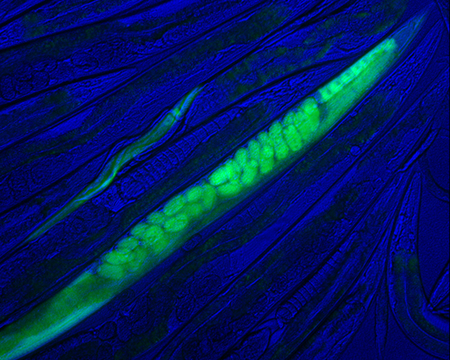
Scalable and versatile genome editing using linear DNAs with microhomology to Cas9 Sites in Caenorhabditis elegans
Work by Alex Paix from the Seydoux Lab:
"Homology-directed repair (HDR) of double-strand DNA breaks is a promising method for genome editing, but is thought to be less efficient than error-prone nonhomologous end joining in most cell types. We have investigated HDR of double-strand breaks induced by CRISPR-associated protein 9 (Cas9) in Caenorhabditis elegans. We find that HDR is very robust in the C. elegans germline. Linear repair templates with short (∼30-60 bases) homology arms support the integration of base and gene-sized edits with high efficiency, bypassing the need for selection. Based on these findings, we developed a systematic method to mutate, tag, or delete any gene in the C. elegans genome without the use of co-integrated markers or long homology arms. We generated 23 unique edits at 11 genes, including premature stops, whole-gene deletions, and protein fusions to antigenic peptides and GFP. Whole-genome sequencing of five edited strains revealed the presence of passenger variants, but no mutations at predicted off-target sites. The method is scalable for multi-gene editing projects and could be applied to other animals with an accessible germline."